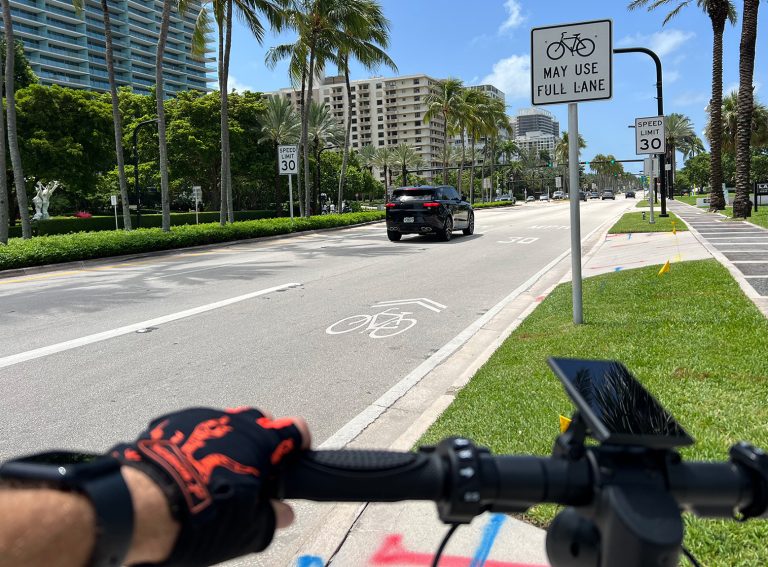Authors: Hannah Younes, Robert B. Noland, Leigh Ann Von Hagen, and James Sinclair, Voorhees Transportation Center at Rutgers University
The COVID-19 pandemic led to a transformation in how people travel.
Cycling in particular became more popular in the U.S., as people searched for safe ways to exercise and interact with others without being indoors.
Bicycle sales increased in the U.S. and across the world. Over 2,400 New Jersey residents responded to two Rutgers University administered surveys in 2021 and 2022. Our sample was weighted to represent New Jersey residents in terms of gender, age, income, and ethnicity.
Has there been a boom in activity?
Yes, but increases were not evenly distributed among the population. 48% of respondents owned a bicycle; 15% cycled at least a few times a week before the start of the pandemic; 15% reported increasing bicycle usage; while 10% decreased usage during COVID. The greatest increase was in recreational cycling: 34% of respondents reported that they increased recreational cycling, compared to just 11% increasing cycling for commuting. Finally, over 50% of respondents who owned a bicycle anticipated increasing cycling in the future compared to before COVID.
The largest increases in cycling were reported among the COVID “work from home” population
Those who teleworked during the pandemic (mostly new teleworkers) increased cycling at higher rates than those who did not telework or those who did not work at all. 20% of COVID teleworkers increased their private bicycle usage, compared to 13% of non-teleworkers and 8% of non-workers. 33% of COVID teleworkers planned to cycle more in the future, compared to 22% of non-teleworkers and 12% of non-workers.
Controlling for gender, income, presence of children, age, and car availability, non-workers and non-teleworkers were around half as likely to increase cycling both during COVID and after the pandemic subsides.
Additionally, men were 1.7 times as likely as women to increase cycling during COVID. The presence of children (under 18) at home was also associated with increased cycling. Lastly, street closures, and other pedestrian friendly measures were associated with higher likelihood of cycling. Those who expect to cycle more in the future tended to be men and have children at home as were those of Hispanic/Latino ethnicity.
Bicycle ownership is not associated with employment status
Teleworkers were not more likely to own a bicycle than non-teleworkers and non-workers. However, they were more likely to use a bicycle. Bicycle owners (regardless of frequency of use) tend to be younger, male, have higher incomes, have children and have at least one car available. Controlling for these factors, teleworking status is not associated with bicycle ownership.
Pedestrian and cyclist improvements were positively associated with cycling
Respondents were asked if they had seen any improvements to make walking and/or bicycling safer or more pleasant during the pandemic. This may look like street closures to cars, pop-up bike lanes, or converting parking for outdoor seating. Those who responded “yes” were more likely to increase cycling and to increase intent to cycle in the future. We actually found the strongest relationship between pedestrian improvements and purchasing a bicycle during the pandemic. Those who purchased a bicycle during the pandemic were five times as likely to report pedestrian improvements compared to non-bicycle owners. Both variables likely influence each other: one might notice pedestrian improvements and purchase a bicycle, or one might purchase a bicycle and then notice the improvements. Regardless of the causal relationship, the findings highlight the potential role of pedestrian and cyclist infrastructure in inducing cycling and future cycling.
However, many of the measures aimed at accommodating social distancing, such as street closures, were temporary. Previous work estimates that by 2021, 75% of 483 worldwide measures were not permanent.
Implications for the future of cycling
A “cycling boom” requires planning and policy considerations. There was a clear link between having the ability to telework during COVID and increasing cycling. However, as the pandemic has subsided, a large proportion of COVID-teleworkers have returned to the office. Between 35-37% of our respondents expect to continue to work from home at least a few days a week after the pandemic subsides, up from 15-18% before the start of the pandemic. Potential decreases in cycling from commuting are likely offset by increases in recreational cycling. Temporary infrastructure measures likely induced cycling, and planners should consider making more street closures and bike lanes permanent as a way to provide safe conditions for increased cycling use.








